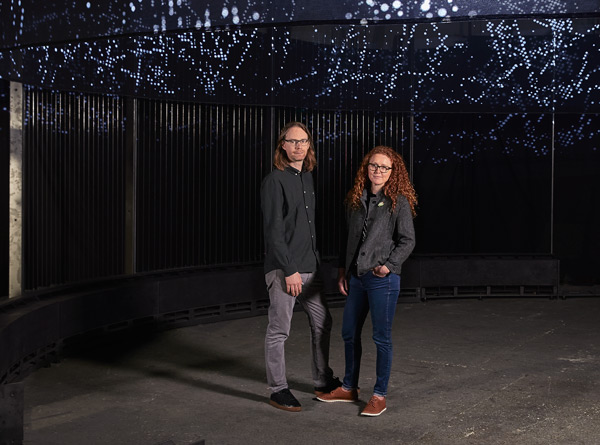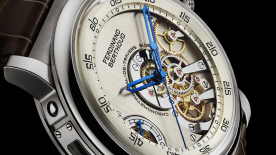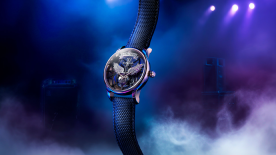HALO, the fourth art commission by Audemars Piguet, which was presented at Art Basel this year, is an ambitious work that presents complex data from the ATLAS experiment at CERN, the European Organisation for Nuclear Research, in the form of an electro-acoustic instrument. The project brought together Audemars Piguet, whose art commissions seek to explore the themes of complexity and precision that are inherent to the world of watchmaking, CERN, whose particle accelerators straddle the border between Switzerland and France on the outskirts of Geneva (and which, it may surprise you to learn, has its own Art Department) and Semiconductor, the British duo of Ruth Jarman and Joe Gerhardt, who specialize in rendering complex scientific phenomena accessible as works of art.

The resulting installation is designed to resemble the architecture of the detector itself and present, both visually and acoustically, the events that are occurring inside it. The ATLAS accelerator fires particles at each other at just below the speed of light in an attempt to recreate the events occurring just one billionth of a second after the big bang. Presenting such events is therefore a challenge, but it’s the kind of challenge that Semiconductor relishes. “We are interested in nature and matter that exist beyond the limits of our perception,” explains Ruth Jarman, “things that you cannot see or cannot hear, or events that happen either over a very long period or in a very short period of time.”
As a result, Semiconductor are used to working closely with scientists, and their period of residency at CERN was perfect for developing the ideas behind HALO. Joe Gerhardt picks up the story: “HALO came about through a passion to get to the raw data at CERN, which was the closest possible that we could get to the natural event. The scientists are not interested in the raw data but a filtered version that contains just the information that they need for their studies. We spent three months just working through the hierarchy at CERN to work out how we could get the data we needed.”
Having obtained this so-called “minimum bias data”, the duo was able to start thinking about how this could be presented. “Particles are points in space and waves at the same time,” Gerhardt notes, “so we wanted something that could show the points in space but also play sound waves. The points that you see displayed as light are also emitted as sound waves by hammers striking the strings, so you are actually seeing the particles and points of light and hearing them as sound waves at the same time.”

The finished installation aims to immerse the viewer as if she were inside the detector itself, witnessing first-hand the particle collisions and the patterns scattered across the detector, at the same time surrounded by eerie sounds emanating from hammers hitting any of 384 individually tuned strings in a circular structure that consists of 16 separate elements, each of which has been hand made. Placed in the centre of a pitch-black hall 4 in Art Basel, HALO is a captivating sight that plunges you into the heart of cutting-edge science. Yet the beauty is that you don’t necessarily need to understand the science behind it to appreciate it.




